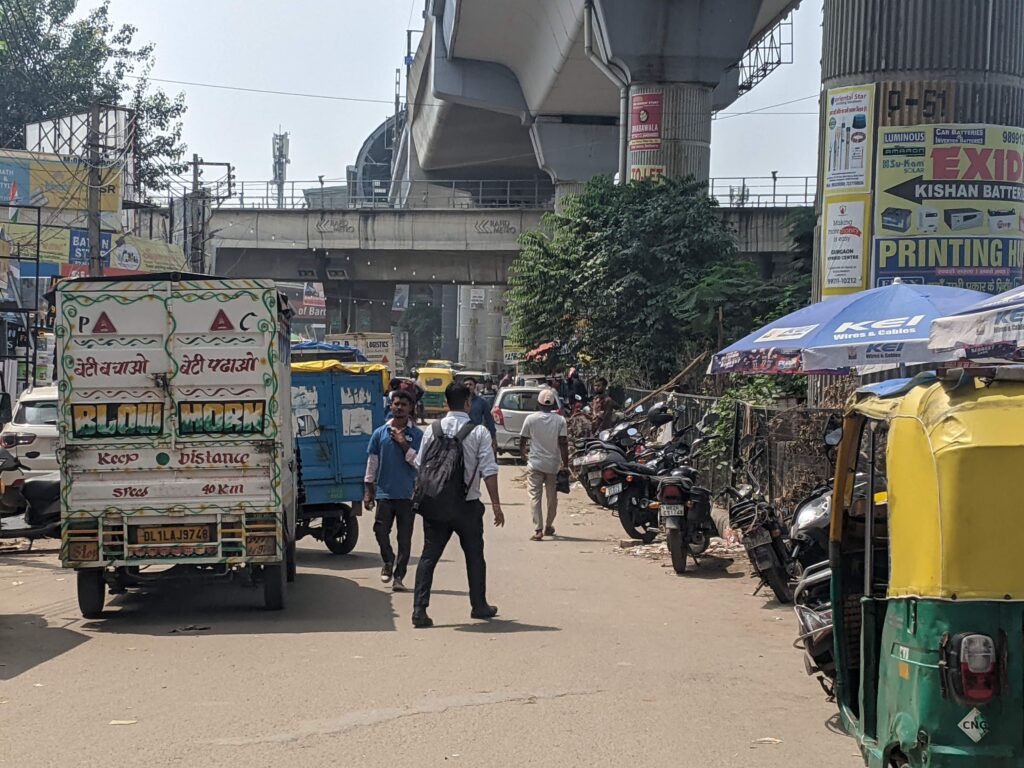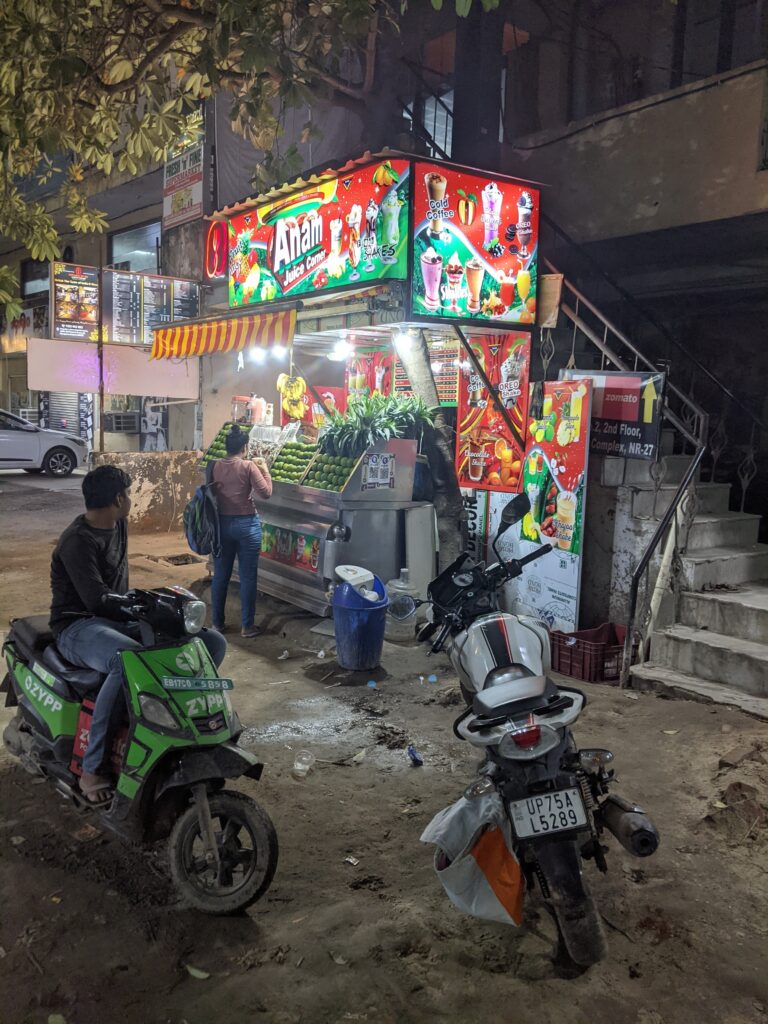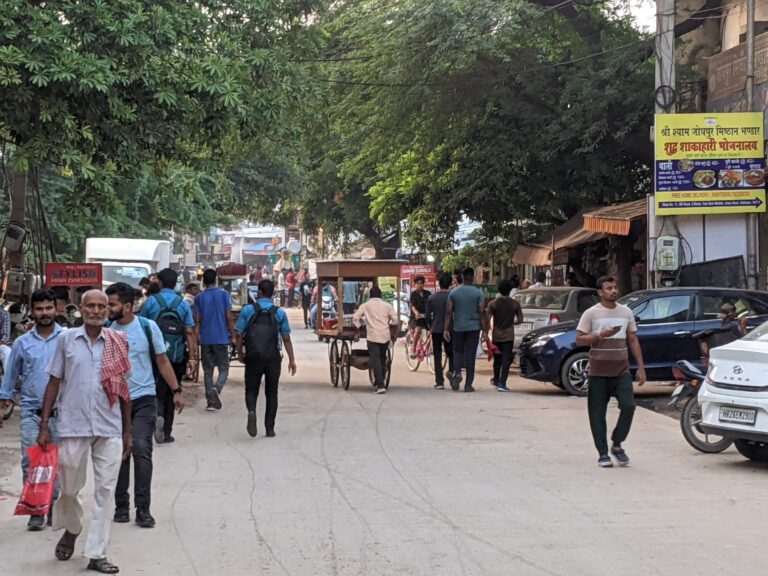The good, bad and ugly:
Lessons from India’s private city
shows the tremendous upside, and a few pitfalls, of privatization.
by Scott Beyer | July 24, 2024
Urban privatization – via “startup cities,” “competitive governance” and the like – has risen these last few decades, namely in the developing world. Business interests, looking to escape the bureaucracy of legacy governments, seek not only raw suburban land but different administrative systems. The degree to which these developments are independent from their host jurisdiction varies, but generally they enjoy regulatory autonomy and lower taxes. Many startup cities, such as Honduras’ Prospera, are early-stage. But perhaps the most successful by growth volume is Gurgaon, India.
In under 40 years, Gurgaon grew from lightly-developed farmland near New Delhi to a 1.5-million-person city. Now officially called Gurugram, it provides a notable case study for how private cities can emerge spontaneously. Devoid of a master plan, strong government or any municipal incorporation status until 2008, its decentralized operations are mostly provided by private companies. The results have been outstanding, although not perfect, and mark an interesting contrast with modern public and private city development alike.


The larger context for how Gurgaon grew lies in the bureaucratic dysfunction of India. The country didn’t shed socialism until 1991, instead enforcing a bribe-stricken “licensing raj” that made it near-impossible to run small businesses. While there have been capitalist reforms since then, licensing is still slow and expensive.
The rapidly-growing country scores 126th on the Heritage Economic Freedom Index, with “uneven” improvement and still sitting in the “mostly unfree” category. “State-owned enterprises are an extensive presence in many sectors,” states Heritage, with low scores in “investment freedom” and “financial freedom.”
Property rights are heavily restricted in India, and the government makes it particularly hard to urbanize rural land. In a study of Gurgaon, Shruti Rajagopalan and Alex Tabarrok describe the country’s land use regime as follows:
Each landowner must apply for permission for non-agricultural use under the specific zoning laws governing the city and state, and each application is considered on a case-by-case basis. A non-agricultural use clearance (NAC) is usually given only for a specific non-agricultural use, not as a general right that flows with the land. In other words, farmers cannot obtain the right to use their land for a non-agricultural use and then convey this right to any buyer. A farmer wishing to sell land for non-agricultural use must first find a buyer with a predetermined proposal for the use of the land and then apply for a NAC for that specific use. Instead of a market in land, there is a series of high transaction-cost bargaining games between sellers, buyers and the state; each party being provided with plenty of opportunities for threats, holdups and delays.
Strong agglomeration economies can allow cities to prosper even amid punitive regulations and taxes. But Indian entrepreneurs and businesses found an alternative in Gurgaon.
In the late 20th century, the area was largely undeveloped, with few active agricultural projects. The state of Haryana elected to take a more favorable approach to development. It did away with the NAC rule, making development by-right. As part of its growth strategy, Haryana did seize land by eminent domain, but “[s]ince the land in Gurgaon was unproductive and sparsely populated, few objected to converting it into non-agricultural use,” write Rajagopalan and Tabarrok. This facilitated large-scale greenfield development not possible elsewhere in India.
As a result, manufacturers and, later, the burgeoning information technology sector flocked there. Gurgaon became a natural hub for the call centers of multinational firms, and later higher-level offices, such as one for General Electric. By 2013, it had become the world’s largest destination for outsourced employment; today, half of Fortune 500 companies have a presence.
The city is home to much high-rise housing. Indian property firm DLF was instrumental in Gurgaon’s construction, building large-scale luxury properties. Some 1,100 such complexes exist throughout the city, along with high-end shopping malls. In a notable contrast to Western (particularly American) land-use rules governing use separation, much residential construction is within the same neighborhoods as office districts.
In turn, private companies have built infrastructure, stepping in where government hasn’t. Gated communities are common, with private security and power. Private roads have been built, along with a privately-funded rail line (though it’s now operated by Delhi’s subway operator). A network of three-wheel rickshaws cheaply fill all transportation gaps.
For this reason, Gurgaon is now called “Singapore’s India” – yet another economic miracle rising due to liberal pro-growth policy (or “un-policy”, one might say). But when it comes to quality of life for residents, Gurgaon isn’t perfect. Wealthy, gated-off areas generally have a First World look and feel. Beyond those, the working class dwell in slum-like conditions and bear the brunt of underinvestment and weak governance.
Gurgaon’s sewage infrastructure is a patchwork of providers. Because the municipal sewage provider connects to comparatively few residents, people without access must rely on independent, small-scale providers. These end up polluting unowned bodies of water, spurring usage of illegal wells. Electricity capacity is poor and blackouts common, prompting home dwellers who can afford them to buy expensive generators. Most roads are in poor shape, and toll collection is inefficient, causing congestion. The public fire department has historically lacked proper equipment to put out fires in the city’s tall buildings. DLF, however, has its own fire department, with better equipment, generally speaking to the stratified services of Gurgaon.
When visiting metro New Delhi last September, I stayed in Gurgaon and can attest to the tragedy of the commons issues: lawless driving, big trash piles, cows roaming around (and defecating in) the street and slums reeking of sewage. The answer is not, per se, to increase state control. All these quality-of-life problems listed are just as rampant across the rest of metro New Delhi.

But it does speak to better potential strategies for private city governance. Imbued within the startup city model is the notion of the “city as service provider” – a management company that vertically integrates its planning, utilities, governance, amenities and more.
Prospera, for instance, is an operating firm just as it is an actual place. Honduras is its first testing ground, but once the company achieves proof-of-concept, it wants to build Prosperas elsewhere that follow the same blueprint. In India, Jamshedpur is a different model. Built by a steel industrialist, the city enjoyed provision of critical services like water and electricity by Tata Steel. In the modern era, it enjoys the most reliable grid in India outside Mumbai, report Rajagopalan and Tabarrok.
Urban privatization, then, doesn’t have to mean anarchy. As the concept grows, city-building companies should learn to complement their economic dynamism with good service provision. Gurgaon already has one side of that coin mastered (the growth), and hopefully will one day become more livable, too – or serve as a warning for how other private cities could be.
Scott Beyer owns Market Urbanism and is author of the Free Cities Center book, “Latin America’s Urban Experience: How markets help developing countries cope with government dysfunction.” This article featured additional reporting from Market Urbanist content staffer Ethan Finlan.
